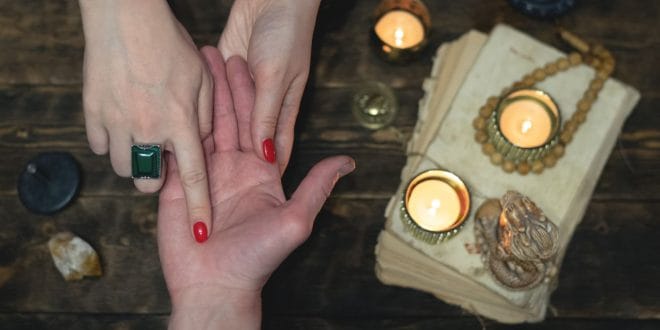Have you ever wondered if your hands hold hidden secrets about your personality, future, or destiny? Palmistry, also known as chiromancy, is the ancient art of reading the lines, shapes, and features of the hands to gain insight into a person’s life. For centuries, people have turned to palmistry to explore character traits, potential challenges, and opportunities ahead.
Whether you’re simply curious or looking to develop a new skill, this guide will introduce you to the basics of palmistry, including how to read the major lines, hand shapes, and fingers.
What Is Palmistry?
Palmistry is the study of the lines, mounts, shapes, and features of the hand. It’s based on the belief that each hand carries symbolic meanings that reflect your inner self, life path, and potential. Practiced in many cultures across the world—including India, China, and Greece—palmistry is both a spiritual and practical tool for self-discovery.
Palmistry can provide insights into:
- Your personality and strengths.
- Your emotional well-being.
- Possible life events or challenges.
- Areas for growth and healing.
Which Hand Should You Read?
One common question is, “Which hand should I read?” The answer depends on your belief system and palmistry tradition, but here’s a general guideline:
- Dominant Hand (Active Hand):
The hand you use most often (right hand for most people) reveals your current life, conscious decisions, and external influences. - Non-Dominant Hand (Passive Hand):
This hand shows your innate potential, subconscious traits, and life path before external experiences shaped you.
Some palmists prefer to compare both hands to see how life circumstances have influenced your natural abilities.
Understanding the Major Lines on the Hand
Your hands are marked by three major lines—the heart line, head line, and life line—as well as other lines that provide additional details. Let’s break down these key features and what they mean.
1. The Heart Line – Emotions and Relationships
The heart line runs across the top of your palm, just below the fingers. It reveals your emotional world, including how you approach love, relationships, and emotional well-being.
Key Interpretations:
- Long and deep: You are deeply emotional and value meaningful relationships.
- Short and faint: You may prefer intellectual connections over emotional intimacy.
- Curved upward: You express your emotions openly and passionately.
- Straight: You tend to be more reserved and logical about your feelings.
Example: If your heart line curves upward toward your index finger, you may be someone who enjoys expressing love and affection freely.
2. The Head Line – Intellect and Decision-Making
The head line is located in the middle of your palm, often starting near the life line. It reflects your mental abilities, communication style, and approach to problem-solving.
Key Interpretations:
- Long and deep: You have strong analytical and critical thinking skills.
- Short: You prefer practical, straightforward solutions.
- Curved: You are imaginative and intuitive.
- Straight: You are logical and prefer structured thinking.
Example: A long, deep head line may indicate a person who excels in complex problem-solving and intellectual pursuits.
3. The Life Line – Vitality and Life Path
The life line curves around the base of the thumb, often starting near the head line. Contrary to popular belief, it does not predict the length of your life. Instead, it reflects your overall energy, health, and major life experiences.
Key Interpretations:
- Long and strong: You have good physical vitality and resilience.
- Short: You may be more prone to physical or emotional exhaustion.
- Breaks or gaps: These may signify significant life changes or challenges.
- Close to the thumb: You may experience periods of low energy or cautiousness.
Example: If your life line is deep and continuous, you may have a strong ability to bounce back from difficulties.
Additional Lines to Explore
- The Fate Line: Often associated with career and life purpose, the fate line runs vertically up the palm.
- The Sun Line: Also known as the line of success, this line indicates creativity, recognition, and personal fulfillment.
Understanding Hand Shapes
In palmistry, the shape of your hand can offer insights into your temperament and natural strengths. Hand shapes are often classified based on the four elements: Earth, Air, Fire, and Water.
1. Earth Hand
- Shape: Square palm with short fingers.
- Traits: Practical, grounded, and reliable. You may have a strong connection to nature and prefer stability over risk.
2. Air Hand
- Shape: Square or rectangular palm with long fingers.
- Traits: Intellectual, communicative, and curious. You enjoy learning and sharing ideas but may overthink or feel emotionally detached at times.
3. Fire Hand
- Shape: Long palm with short fingers.
- Traits: Energetic, passionate, and action-oriented. You thrive on adventure and leadership but may need to manage impulsiveness.
4. Water Hand
- Shape: Long palm with long fingers.
- Traits: Sensitive, intuitive, and empathetic. You are deeply connected to your emotions and may excel in creative or healing professions.
Finger and Mount Interpretations
In addition to lines and shapes, palmists also examine the fingers and mounts (raised areas on the palm) for further insights.
Finger Meanings:
- Thumb: Willpower and independence.
- Index Finger: Ambition and leadership.
- Middle Finger: Responsibility and balance.
- Ring Finger: Creativity and self-expression.
- Little Finger: Communication and social skills.
Mounts on the Palm:
- Mount of Venus (below the thumb): Love, passion, and vitality.
- Mount of Jupiter (below the index finger): Ambition and confidence.
- Mount of Saturn (below the middle finger): Discipline and responsibility.
- Mount of Apollo (below the ring finger): Creativity and success.
- Mount of Mercury (below the little finger): Communication and adaptability.
How to Get Started with Palmistry
If you’re interested in learning palmistry, here are a few tips to help you get started:
1. Study Your Own Hands
Begin by observing the lines, shapes, and mounts on your own hands. Compare your dominant and non-dominant hands to see how your traits and life experiences are reflected.
2. Practice on Others
Ask friends or family members if you can read their hands. This will help you build confidence and notice patterns across different hands.
3. Use a Palmistry Guide
There are many resources—books, courses, and websites—that provide detailed interpretations of hand features. Choose a guide that resonates with your learning style.
4. Trust Your Intuition
While palmistry has traditional meanings, your intuition plays a crucial role in interpreting the hand’s unique story. Allow yourself to connect with the person you’re reading and trust your instincts.
Final Thoughts
Palmistry is a fascinating blend of art, intuition, and symbolism. By learning to read hands, you can uncover deep insights about yourself and others, guiding you toward greater self-awareness and personal growth. Whether you’re seeking clarity about relationships, career, or emotional well-being, your hands may hold the answers you’re looking for. 🌟
Have you ever had your palm read? What did you discover? Share your experiences in the comments below!
 Lifeved The Keys to a Better
Lifeved The Keys to a Better



 by
by